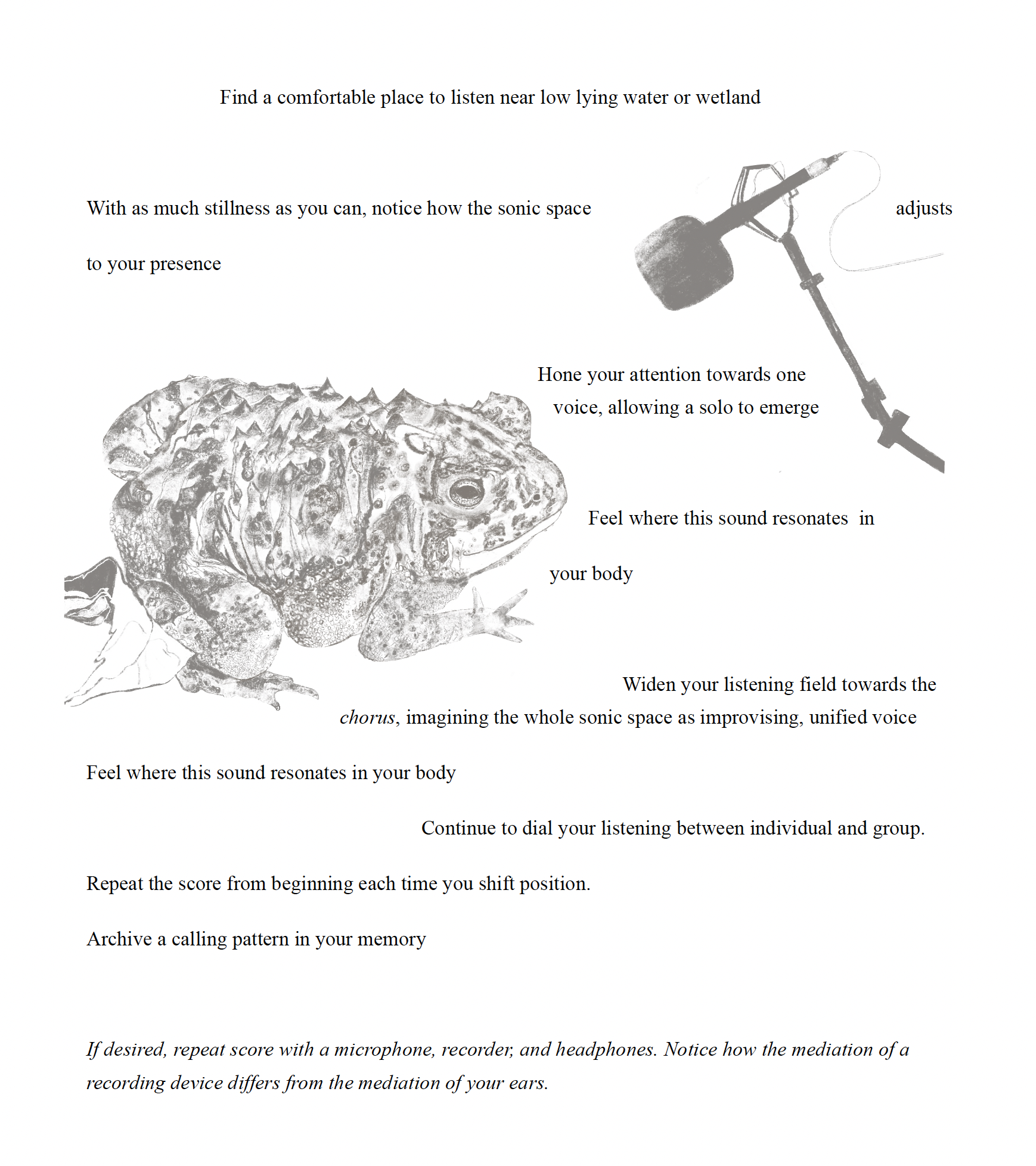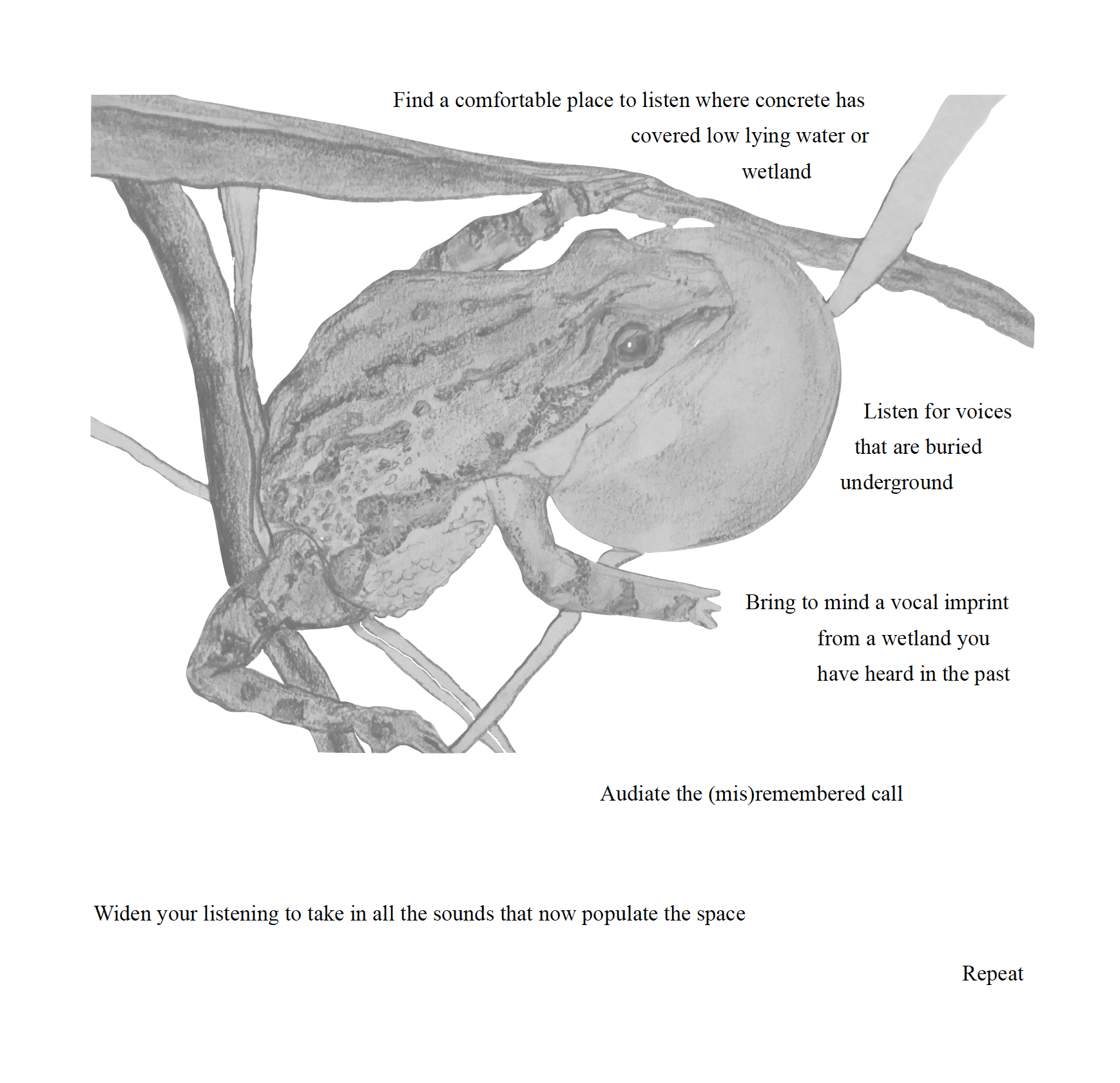4 Biologists Singing : Choral listening alongside frogs and their herpetologists
Biologists Singing
Jami Reimer
I became transfixed by frog vocalization during a particularly powerful amphibian chorusing event heard while riding my bicycle across the state of Wisconsin in May 2014. During this ride, I began making field recordings for the first time, and a new posture toward sound suddenly opened up to me. I noticed how I listened differently, how musical encounters could be manufactured by virtue of microphone placement, direction, timing, and monitoring. The networked organization of amphibian voice tickles the chorister in me. I perceive a kind of choral magic in frogs’ cyclical composition and recomposition of near-invisible, camouflaged bodies into choirs of staggering volume. Of course, my own disciplinary posture shaped by years of musical practice inflects my listening—each time I pull out my microphone and hit record, my epistemological upbringing seeps in.
In my compositional field recording practice, the microphone becomes an essential character, shaping and channelling, and indeed voicing, and not merely witnessing, a pre-existing or given sonic reality. I rely on voice as an acoustic surface to get closer to knowing another species. Obviously, there are limits to my mode of relation. I’m no biologist, but what about those biologists who, like me, can be found huddled around swamps with headphones and microphones? What might I learn about frog voice—about chorusing—from the listening worlds of biologists committed to amphibian conservation? Bioacoustics, with its own history of listening and its particular epistemological aims, carries both the orthodoxy of scientific method and the sensuous archival practices of musicology and media studies. I’ve become curious how bioacoustic listening and recording might intersect and participate within multi-species media assemblages—speculative sorts of multi-species choruses. I joined the Amphibian Natural History Lab with Dr. Felipe Toledo at the University of Campinas in Brazil during the 2022 mating season to listen in on biologists listening to frogs. Through interview, field recording, text, and video, the following audiovisual essay chronicles moments of this eavesdropping.
Listening score for mating season

Listening score for habitat loss [1]

- According to the International Union for the Protection of Nature, 41% of all 1 amphibians at this time are under threat of extinction. Amphibians represent the most at-risk vertebrates on the planet. ↵

